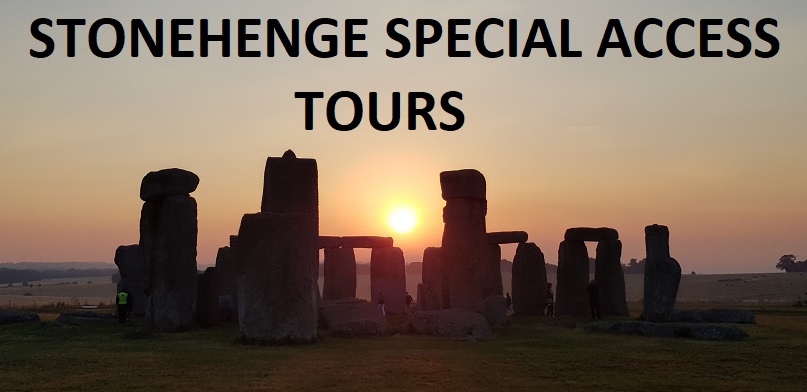 In the third of a series of Western Mail articles by speakers at this year’s Do Lectures, geologist and author Brian John debunks the ‘bluestone myth’ – the idea that prehistoric people travelled hundreds of miles in order to drag gigantic stones toSalisbury Plain
In the third of a series of Western Mail articles by speakers at this year’s Do Lectures, geologist and author Brian John debunks the ‘bluestone myth’ – the idea that prehistoric people travelled hundreds of miles in order to drag gigantic stones toSalisbury Plain
THIS story is about the heroic neolithic tribesmen carrying scores of giant stones from the Preseli Hills to Stonehenge has now entered into British mythology. It has become gradually clearer, over the last decade or two, that there is no evidence to support this story. I want to inspire people to think very carefully about some of the myths that we as a community sign up for.
A whole story has been developed over the years about this heroic human venture of tribesmen coming all the way to the Preselis to pick up the bluestones from a quarry – and then to carry those 80 stones all the way back to Stonehenge where they were going to be used as part of this amazing new monument. That has become a part of British mythology but is widely accepted as fact. It has become an immensely valuable story commercially for British tourism – a million people visit Stonehenge each year and nearly all of them are familiar with this heroic tale. That tale is used quite cynically, quite deliberately, by English Heritage and almost every other organisation that has anything to do with tourism in the promotion of Stonehenge, as a means of attracting even more visitors there
The Questions?
What I am trying to do is stand back from all that and question: what exactly is the evidence in support of this wonderful story? When you start to dig a little bit you find that actually there is no evidence at all. It is entirely a myth which was invented in 1922, immediately after the First World War. The myth received instant acceptance on the part of the British public because there was a desperate need for a feel-good factor after the war – national pride had been dented, the economy was in tatters and everybody needed a good news story.
The story was invented by a Welsh geologist, Herbert Thomas. He gave a lecture which had purported to demonstrate that a lot of the bluestones had come from the Preselis. His geology was reasonably accurate. He was intent on telling this story of human transport.
His theory, once he had propounded it, was instantly grabbed hold of by everybody. It was a wonderful tale that showed us just how clever our neolithic ancestors were and they were a damn’ sight more clever than those ancestors on the Continent – especially in Germany. There was almost a strong, almost xenophobic element about this propaganda.
 No-one questioned this theory or seriously investigated it.
No-one questioned this theory or seriously investigated it.
It was just blown up from that point on. It has become one of the key beliefs of Britain, in the same way we believe about King Arthur and Glastonbury and Robin Hood in Sherwood Forest. It is now a part of British mythology.
There is no evidence that the stones were taken from this so-called neolithic quarry at Carn Meini. In fact, there is no evidence of the quarry at all. The stones which are supposed to have come from that one source actually came from many other places. As the geology has advanced, with a lot of work from the Open University and many other geologists, we now know that the stones came from at least 20 other places. They haven’t come from the eastern end of the Preselis at all. We know that at least two of the stones have come from the Newport area, quite possibly on the North Pembrokeshire coast. Another stone has come from the Brecon Beacons and some stones seem to have come from the Fishguard area.
What the geologists say
It was already known by some geologists in 1922 that during the Ice Age there had been an enormous glacier which had flowed across Pembrokeshire and had actually flowed up the Bristol Channel and into the coastlands of Somerset, Devon and Cornwall – we still don’t know how far east that glacier went, but it certainly did cross the Bristol Channel pressed up across the English coasts. A number of these old geologists had demonstrated this pretty clearly, but for reasons that I still don’t fully understand, Thomas in 1922 totally dismissed this theory in favour of his human transport theory. And still nobody has ever found any evidence as to how exactly the stones were moved, although of course there is endless speculation about it. There are literally thousands and thousands of pages on the internet devoted to precisely this question. We should give more credence to scientific evidence and keep myths in the places they belong, namely mythology, and don’t let’s pretend that myths are telling us anything concrete about what happened in the past.
The problem for archaeolo- gy is it has become involved in pedalling myths and seems to have lost its respect for evidence on the ground. People are so obsessed with making blockbuster TV programmes, for example, with support from National Geographic magazine and the Smithsonian Institute, that actually the archaeologists seem to be trying to out do each other on how spectacular their stories are. It has all become a little bit absurd.
When we look at the hard science behind the bluestones story, there is quite a lot of evidence to support the idea that the bluestones at Stonehenge are no more than glacial erratics that were transported by the ice, maybe 450,000 years ago and then picked up somewhere in the Salisbury Plain in the East Somerset area – probably within easy striking distance of Stonehenge and that is where they were picked up from.
The whole of the Stone- henge story is a complete fabrication.
I have just put up a YouTube video called StoneHenge Unhinged in which I show that Stonehenge was probably never even finished. We have these wonderful reconstructions of Stonehenge, showing this incredible geometric arrangement of stones, and all the archaeologists and astronomers say this was a highly sophisticated astronomical observatory etc, but actually there is no evidence that it was ever finished.
I think it was just an experiment. They tried to build something that was really rather ambitious but they really didn’t have enough stones to finish it. On the ground about half of the monument has never been excavated and 67 of the stones are totally missing, but people have just imagined that they were there without having any evidence to support that idea.
Stonehenge has become a national icon and a key part of mythology with immense commercial value attached to it. Over and over again, people talk about the magical serenity of Stonehenge and the great feeling of power it gives you – which is wonderful, but I think people have been brought up to have this reverence for Stonehenge because it is such an iconic structure and that in itself creates a feeling of religious esteem or spirituality.
I’m not saying Stonehenge is not wonderful. It is quite inspirational in the sense that it was a brave enterprise. The stones that are there are not very accurately placed and a lot of them are pretty rough and I think were just placed there as part of an ambitious building project
If you want to here all the theories why not organise a ‘Stonehenge special access’ tour with the English Heritage. This enables you to go beyiond the fences before or after its open to the public. The Stonehenge Tour Company and Histouries UK, based in Salisbury and Bath offer a ‘Rent a guide’ service. Salisbury guided Tours also offer specail access tours from Salisbury
Merlin @ Stonehenge
The Stonehenge Stone Circle Website














Very interesting article! – not entirely accurate but great to explore new Stonehenge theories
The article above was written by a Western Mail reporter, not by me. It is indeed full of mistakes — but at least she got the general message right! if anybody wants to examine my theories about Stonehenge in more detail, you are welcome to look at my blog:
http://brian-mountainman.blogspot.com/
I post up new information frequently, and comments are welcome.
Latest research by Ixer and Bevins invalidates Brian’s argument.
See: Bluestones – proof for human transport to Stonehenge? Mike Pitts, Digging Deeper, [http://mikepitts.wordpress.com/2011/12/17/bluestones-proof-for-human-transport-to-stonehenge/]
Why did you delete my comment?
It was not offensive in anyway – I simply stated that things on the bluestone scene have moved on significantly since the above article was posted which they have as you have reported yourself.